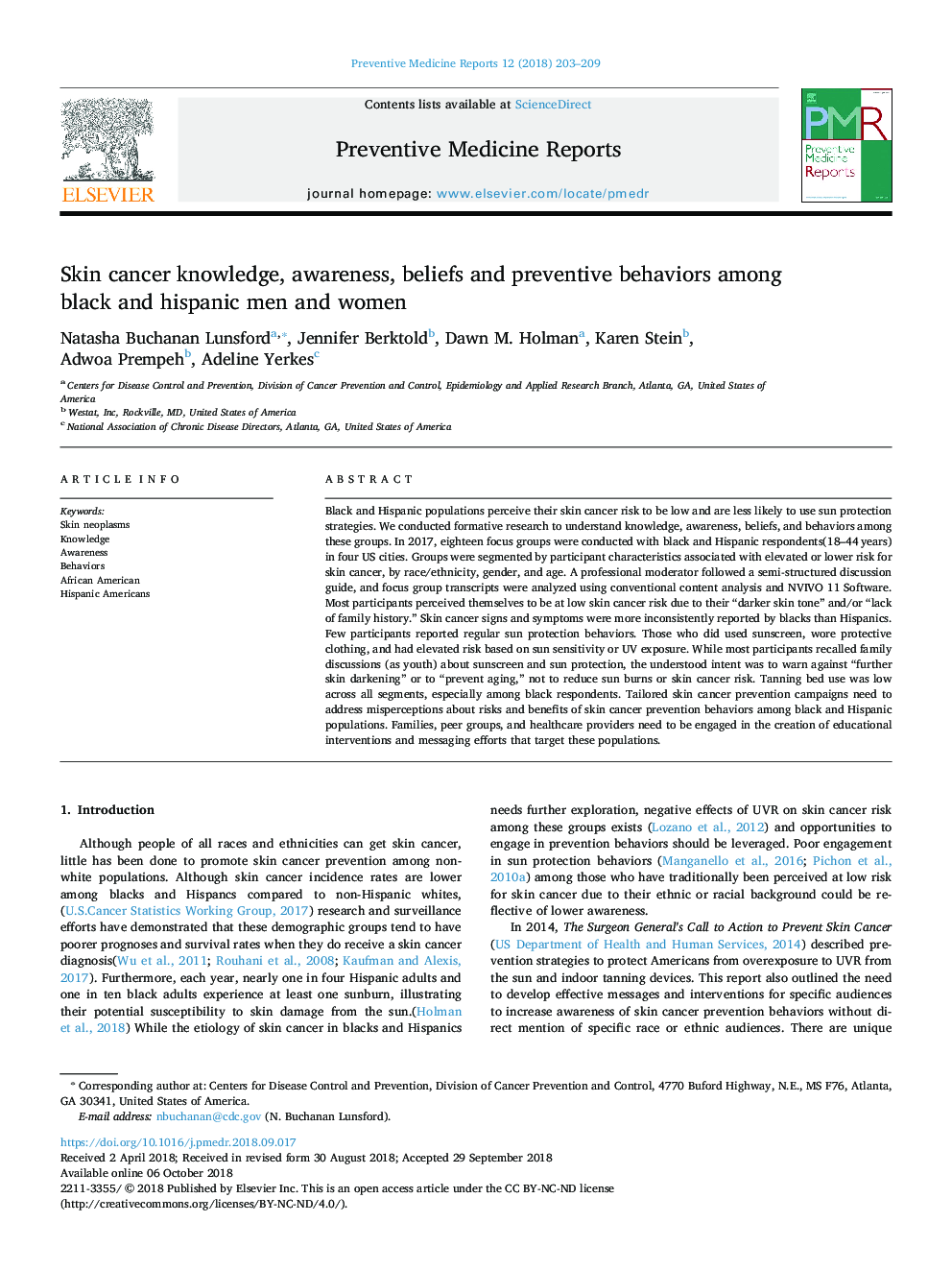| Article ID | Journal | Published Year | Pages | File Type |
|---|---|---|---|---|
| 11263928 | Preventive Medicine Reports | 2018 | 7 Pages |
Abstract
Black and Hispanic populations perceive their skin cancer risk to be low and are less likely to use sun protection strategies. We conducted formative research to understand knowledge, awareness, beliefs, and behaviors among these groups. In 2017, eighteen focus groups were conducted with black and Hispanic respondents(18-44â¯years) in four US cities. Groups were segmented by participant characteristics associated with elevated or lower risk for skin cancer, by race/ethnicity, gender, and age. A professional moderator followed a semi-structured discussion guide, and focus group transcripts were analyzed using conventional content analysis and NVIVO 11 Software. Most participants perceived themselves to be at low skin cancer risk due to their “darker skin tone” and/or “lack of family history.” Skin cancer signs and symptoms were more inconsistently reported by blacks than Hispanics. Few participants reported regular sun protection behaviors. Those who did used sunscreen, wore protective clothing, and had elevated risk based on sun sensitivity or UV exposure. While most participants recalled family discussions (as youth) about sunscreen and sun protection, the understood intent was to warn against “further skin darkening” or to “prevent aging,” not to reduce sun burns or skin cancer risk. Tanning bed use was low across all segments, especially among black respondents. Tailored skin cancer prevention campaigns need to address misperceptions about risks and benefits of skin cancer prevention behaviors among black and Hispanic populations. Families, peer groups, and healthcare providers need to be engaged in the creation of educational interventions and messaging efforts that target these populations.
Related Topics
Health Sciences
Medicine and Dentistry
Public Health and Health Policy
Authors
Natasha Buchanan Lunsford, Jennifer Berktold, Dawn M. Holman, Karen Stein, Adwoa Prempeh, Adeline Yerkes,
